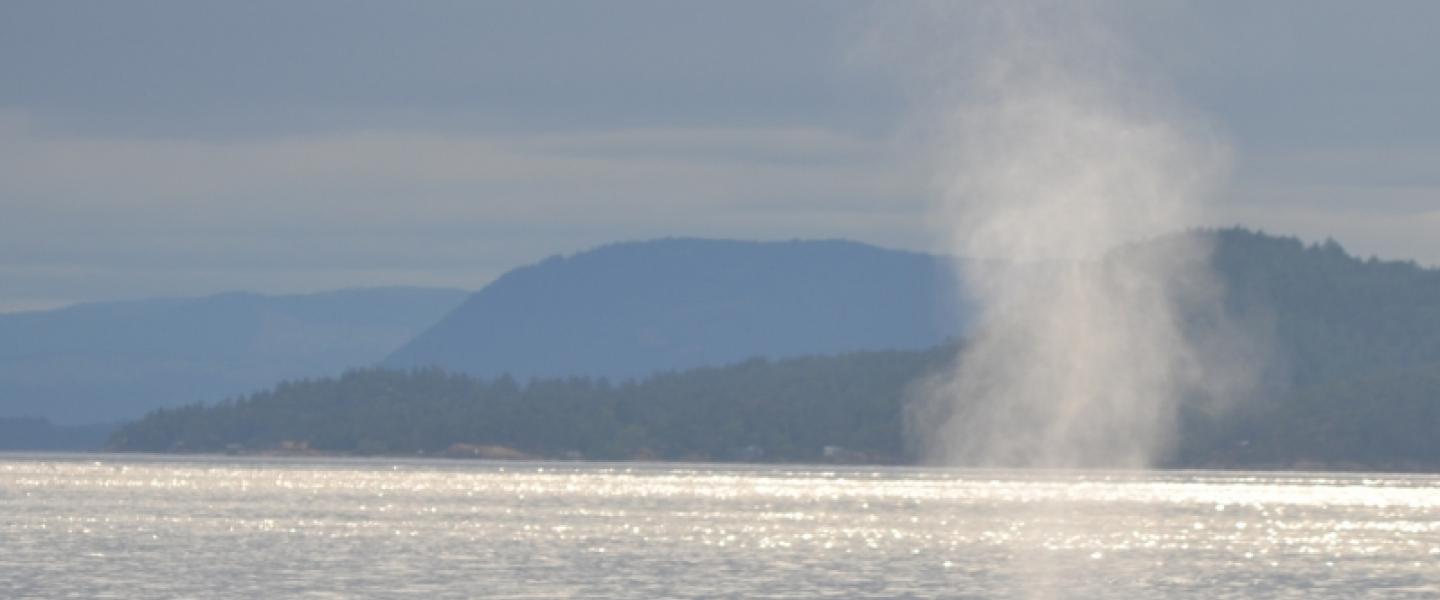
[Sarah | 08/22/2018 | M/V Sea Lion | 01:30 Classic Tour]
On Wednesday Captain Pete, naturalist Mariana, and I ventured out on the Salish Sea under smoky conditions. Though we have had record smoke from the surrounding area’s wildfires and light wind conditions making the smoke hang over the islands, our wildlife sightings have been unaffected.
We left Friday Harbor and headed south through San Juan Channel, catching glimpses of harbor porpoise and seals as we cruised through the flat calm water. As we cruised through the traditionally turbulent Cattle Pass we got awesome looks at tidal upwelling currents. This rare water movement only occurs under certain conditions and in certain locations around the world. Upwelling is important because in the ocean the highest concentration of nutrients are found at the bottom of waterways. With the upward movement of water, these rich, sunken nutrients are brought back to the photic zone (read: light zone!) to be utilized by phytoplankton (teeny-tiny floating algae) populations which form the foundation of our marine food chain. We cruised out of the swirly water and into the wide-open expanse of southern Haro Strait and eastern Strait of Juan de Fuca.
Working our way up the west side of San Juan Island we saw so many groups of diving birds feeding… and so many salmon jumping! Right now we are in the middle of a sockeye salmon run, and we’ve been seeing these beauties launching from the water. Currently our population of salmon have reached a potential low of 10% of our historic stock. With such low numbers in our waterway, part of me can’t help but wonder what these historic runs would have looked like 200 years ago…. How many salmon would have been at the surface?
After beautiful cruise up the west side of San Juan Island we spotted the massive exhalations of two humpback whales! These massive animals are as long as a school bus and can weigh the same amount as seven African elephants. The whales were surfacing and feeding together amongst the clusters of birds at the surface. These bait ball aggregations of birds indicate that there is a school of small fish (read palm-sized) right below the surface being pressed up to the surface by any number of underwater predators. We often see whales and other marine mammals taking advantage of these large schools of small fish… a humpback whale can eat an entire school in one bite!
We had a great encounter with the whales before heading out to look for other wildlife; finding seals, sea lions, and bald eagles before heading for the dock. It was another amazing day in the Salish Sea.